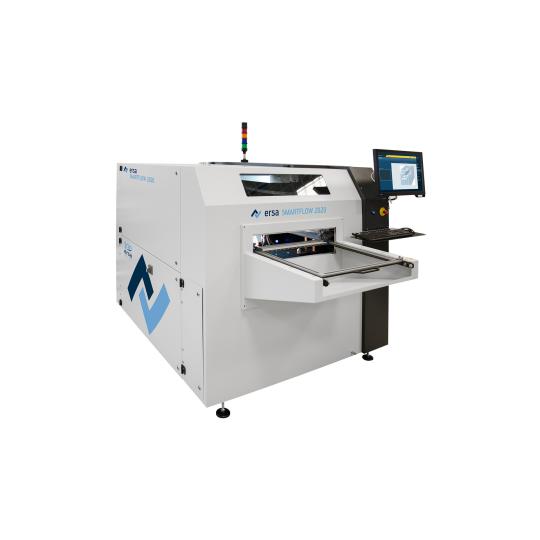Selective soldering
The selective soldering process was developed to solder specific through-hole components (THT) without heating the entire printed circuit board. The method uses one or more small solder waves that make targeted contact with the pins to be soldered. This leaves sensitive SMD components on the top of the printed circuit board unaffected.
Selective soldering offers a controlled thermal profile and reproducible soldering results thanks to precise control of parameters such as soldering time, wave height, temperature, and flux dosage. The process modules—fluxing, preheating, and soldering—function independently, ensuring optimal process balance and short cycle times.
Key features:
- Precision per solder point: each contact is approached individually for maximum control.
- Limited thermal load on nearby components.
- High repeat accuracy through automated process control.
- Flexibility in product changeover – ideal for high-mix/low-volume production.
Depending on the application, either mini-wave (for small batches and complex layouts) or multi-wave (for larger series and higher throughput) is used.
Wave soldering
The wave soldering process is suitable for soldering larger numbers of THT components in a single step. The entire underside of the printed circuit board is passed through a continuously flowing wave of solder, forming all connections simultaneously.
In modern systems, such as the Ersa POWERFLOW series, the process takes place in a full nitrogen atmosphere (N₂) to prevent oxidation and improve soldering quality. The system consists of several zones: flux application, preheating, and solder wave. The preheating can be constructed modularly with convection and IR heating, allowing the temperature distribution to be optimally tailored to the assembly.
Key features:
- High throughput – multiple solder joints in a single operation.
- Cost-effective for large series and standard THT layouts.
- Stable soldering quality thanks to controlled wave height and temperature profile.
- Modular design with expandable preheating zones and transport systems (frame or finger).
Wave soldering is the preferred method for applications with repetitive production and a large number of identical components, such as power supplies, industrial controllers, and automotive electronics.
Process selection and integration
The choice between selective soldering and wave soldering depends on the complexity of the printed circuit board, the component density, and the desired production capacity. Both processes can be integrated into automated production lines with inline transport, process monitoring, and data analysis according to Industry 4.0 standards.
Ersa combines these technologies with advanced process control via ERSASOFT 5 and modular system design, allowing manufacturers to flexibly scale their production capacity without compromising on quality, traceability, or energy efficiency.




















